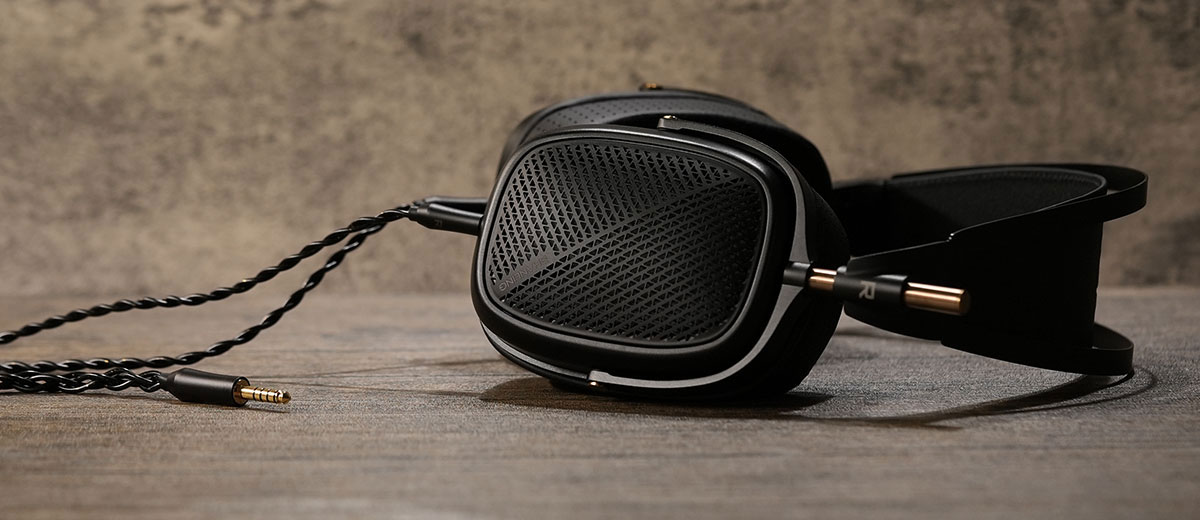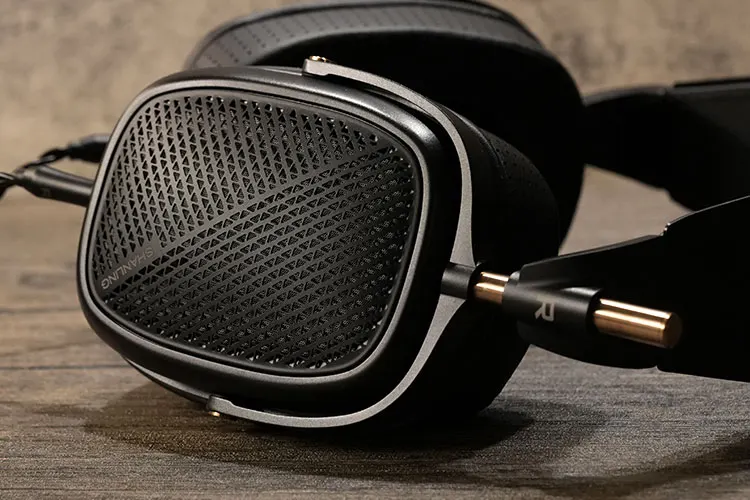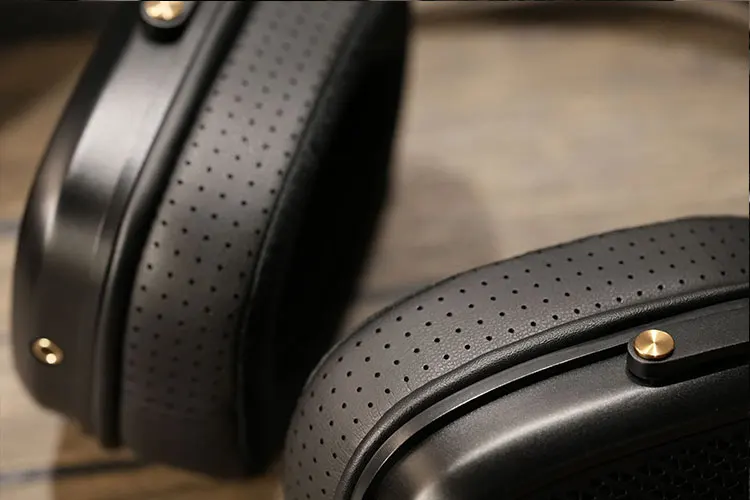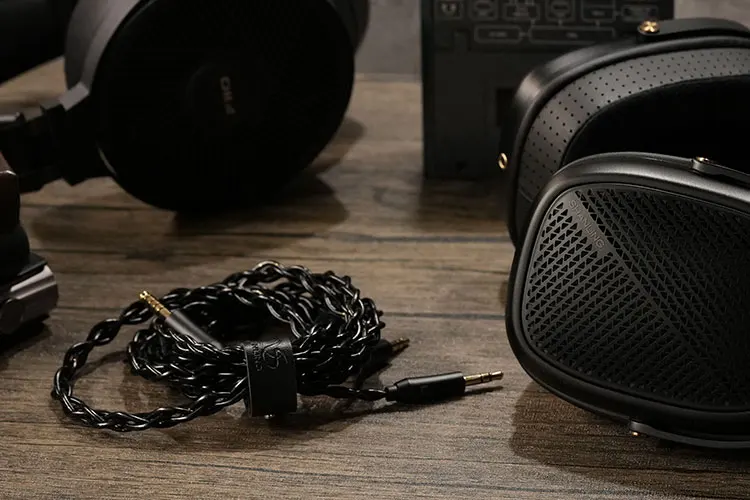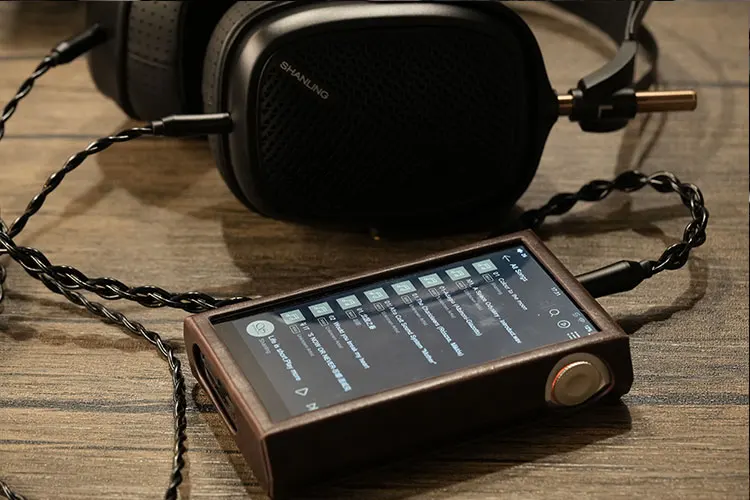Today, James reviews the Shanling HW600, the company’s first high-end set of open-back 110x86mm planar magnetic driver headphones. It is priced at $1099.00.
Disclaimer: This sample was sent to me in exchange for my honest opinion. Headfonics is an independent website with no affiliate links or status. I thank Shanling for their support.
Click here to learn more about Shanling products we previously reviewed on Headfonics.
This article follows our current scoring guidelines which you can read in more detail here.
In this review, we have the first set of headphones designed by Shanling called the HW600. These are open-back planar headphones and are pitched more to the high-end of the market with a price of $1099.
While sporting a rather large driver area the form factor and design are probably the most portable in the competition, and the sensitive design seems to have great synergy with portable gears.
Could the HW600 capture Shanling’s tuning essences and how well can it compete against established competitors on different gears? Let’s find out.
Features
The HW600 houses a large 110mm x 86mm planar driver with an 8µm polymer membrane, this is equivalent to 0.0008cm in thickness which is not the thinnest but quite close to the competition.
The rather uncommon rectangular-shaped membrane has a large surface area, close to some portable headphones quite a bit larger in size so I am expecting good dynamics and bass.
A maze of silver-plated aluminum coils for higher efficiency is embedded, coupled with a high-tension structure to further enhance details and clarity as claimed by Shanling.
On the two sides of the thin membrane, there are 14 neodymium-iron-boron magnets which together, reach a flux density of up to 1.8T.
This is probably the reason why the HW600 achieves a sensitivity of 104 dB/1Vrms @1kHz over 30Ω impedance, quite a bit more responsive to power compared to many competitors.
Design
The dark-themed HW600 is made from aviation-grade 7-series aluminum with stainless steel parts, featuring a solid, full-metal construction that gives it a premium appearance and feel.
The front cover is finely machined with geometric patterns and has a smooth finish, and the leather headband feels durable and well-crafted.
Each part receives a refined surface treatment, with some components sporting contrasting colors to enhance its visual appeal. The design includes many curves that complement the square earcups, adding to its overall aesthetic.
I was pleasantly surprised to discover that despite its large diaphragm, the HW600 feels very compact with its form when compared to many bulkier competitors.
Comfort & Isolation
The HW600 weighs 480g, yet it doesn’t feel cumbersome in everyday use, likely because of the large headband that effectively distributes the weight.
Adjusting the wearing position of the HW600 is simple, with the mechanism centered around the yellow-gold-colored pillar. You can slide it up or down along the axis and turn it freely for adjustment.
Equipped with vented sheep-skin pads that are moderately soft and with sufficient clamping force from the framework, the HW600 remains very comfortable despite its slightly weighty full-metallic construction.
During my test in a warm room, possibly due to the vented design, the earpads remained breathable and dry even after an hour or two of listening.
Stock Cable
The HW600 comes equipped with a 1.5m, 6N single-crystal Copper cable containing 56 cores, terminated with a 4.4mm plug.
The earcup connectors feature 3.5mm plugs, facilitating easy rolling with aftermarket upgrade cables. The included stock cable is notably soft, tangle-resistant, and accompanied by a leather cable binder in the package.
Regarding cable rolling and its sound impact, it’s worth noting that the HW600 is quite responsive to the material used and when I swap the cable from other headphones on the HW600 the response is immediately noticeable.
For those seeking a livelier response, experimenting with other SPC or silver cables is recommended. The stock cable leans slightly towards the lower end, which is a favorable choice for outdoor listening scenarios where bass presence needs a boost.
It sounds forgiving though you may find the perceived resolution slightly hindered compared to SPC cables that produce more clarity in the highs.
Packaging & Accessories
The HW600 arrives in a well-protected box, showcasing a clear dedication to presenting the headphones in a premium manner. Thick foam paddings ensure the headphones are secure during transport.
In the accessories compartment box, a 4.4mm cable is included. This positioning suggests the product is likely intended for pairing with portable devices, although desktop gear with 4.4mm output can also benefit from the more robust output power.
While many recent headphone releases have included storage cases, the HW600 does not come with one. It is hoped that Shanling will consider including at least a pouch for storage in future iterations, as well as a converter cable to connect to Single-ended sources.
Sound Impressions
Before testing, the HW600 undergoes around 100 hours of burn-in. Impressions are gathered by pairing it with the Shanling EC Mini, the M5 Ultra Player, the RME ADI-2 Pro, and the xDuoo XD05 Pro for evaluation.
Summary
The HW600 is easy to drive despite its large driver membrane area, sounding dynamic even on DAPs like the Shanling M7, especially in the mid-range frequencies.
The tuning direction is reminiscent of recent Shanling players, offering satisfactory fullness in the body while maintaining swift articulation in the mids with sufficient extension.
There is just a tiny bit of sparkle in the treble, balancing well between perceived clarity, speed, and vocal authority.
Planar headphones are often tuned to prioritize treble transients and speed, sometimes clinical in presentation and this is not the case for the HW600 which sounds vivid in the mid-range.
A W-shaped, neutral-warmish, and slightly revealing tuning profile is presented, with no frequency range overly boosted and sufficient brilliance and openness.
Bass
The HW600 delivers solid and moderately deep sub-bass even when driven by portable devices.
The planar driver allows for great agility which gives a moderately clean decay. This results in bass that is well-powered, adequately textured, and nicely defined rather than exceedingly deep or fat.
The fullness of the bass is partially contributed by the pure copper stock cable. When swapping it out for other materials such as silver-plated copper, you can notice the bass being more tamed and a cleaner, faster response is observed.
Testing with R&B and pop, the HW600 exhibits well-layered bass with a notable punch, which sounds clean and quite expressive with fast guitar licks and fast drumming tracks.
The bass intensity isn’t very strong but is sufficient, and it sounds well textured. When paired with more powerful sources or amps, the treble becomes more aggressive and firmer, enhancing overall dynamics.
The HW600 gives a slightly warmish impression across the various gear setups tested and the design seems to dampen it to mimic the punchiness on dynamic drivers.
The bass generally sounds controlled even with multiple bass instruments and doesn’t bleed into the mids or appear overly thick, maintaining an airy quality and satisfactory dynamics that also help the HW600 to sound more stereophonic.
Mids
There is good energy in the mids that articulates from the smooth mid-bass, providing vocals and instruments in the mid-range with more penetration power to cut through the mix.
Acoustic guitars and drums are presented with great clarity, also sufficient airiness, distinct picking details, and crisp string plucking.
The agile response speed contributes to a denser and clearer overall impression, and the intensity of the mids works well with voices that are more powerful and moderately dark.
The mids and upper mids have sufficient energy, creating an intimate and expressive vocal presentation. There is a commendable level of vividness and control to prevent the mids from sounding overly pushed forward or dampened, sounding clear but not aggressive.
The upper vocal frequencies are skillfully smoothed to eliminate any harsh sibilance, lending a smoothened quality to sharper, cleaner voices and violins, which some may perceive as sweet sounding.
The boost in the upper mids elevates vocal harmonies and air and is followed by a rather sharp roll-off that takes away sibilance.
The tuning fits sharper mixes like K-pop or fast violin solos very well. If you prefer a bit more excitement, you may try swapping over to SPC cables for stronger sharpness and openness.
Treble
Following a slight recess in the upper mids to treble region that helps mitigate sibilance, there is just enough treble amplitude to provide cymbals with ample presence without sounding muted.
The treble on the HW600 effectively balances the bass and mid-bass intensity, resulting in better tonal balance.
There is a fair extension allowing for the retention of details in the air and harmonics. When tested with streaming content, particularly in genres like Pop and Jazz, the sound is relaxing due to the smoothed treble and full low end.
The somewhat reserved treble tones down the vocals, making them less intrusive and sweeter. However, as more instruments join the mix, a slight EQ boost could enhance brilliance and sparkle, also enhance the perceived separation.
Again, the HW600 is quite responsive to the pairing, stronger swing and current would help the treble to sound more defined and textured, also the bass is more firmly outlined when paired with more powerful gear and higher gain settings.
Weaker sources tend to shift the focus towards the mid-lows, offering a fuller, more forgiving sound profile but the treble roll-off may sound more obvious which suppresses openness.
Staging & Dynamics
The HW600 sounds moderately spacious and the width stretches slightly more than the depth, with the lift in the upper mids creating an impression of instruments and vocals being positioned intimately.
I would describe the staging size as a small lecture hall, with plenty of details in the air well captured.
The vocal image sounds fatter with a less powerful source which may sound more relaxing, though I prefer stronger amplification and decoding quality which helps it to be better defined and precise.
Nuances in the air, harmonic tones, and reverbs can be more easily discerned when the HW600 is well-powered.
This renders the venue in the recording more realistic and natural, but generally, it is still slightly on the shy side which is also the reason why the staging feels more confined.
There is a notable sense of accuracy in the upper frequencies, likely attributed to the fast response of the planar driver. This allows for clear positioning even when the lower frequencies are intense and slightly fat, and when the volume goes high.
Click on page 2 below for my recommended pairings and selected comparisons.

